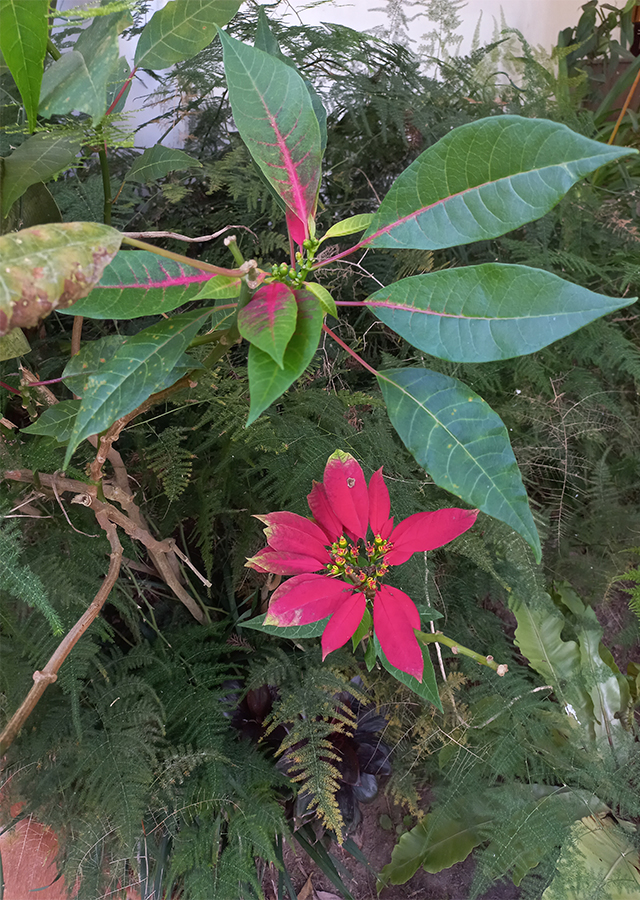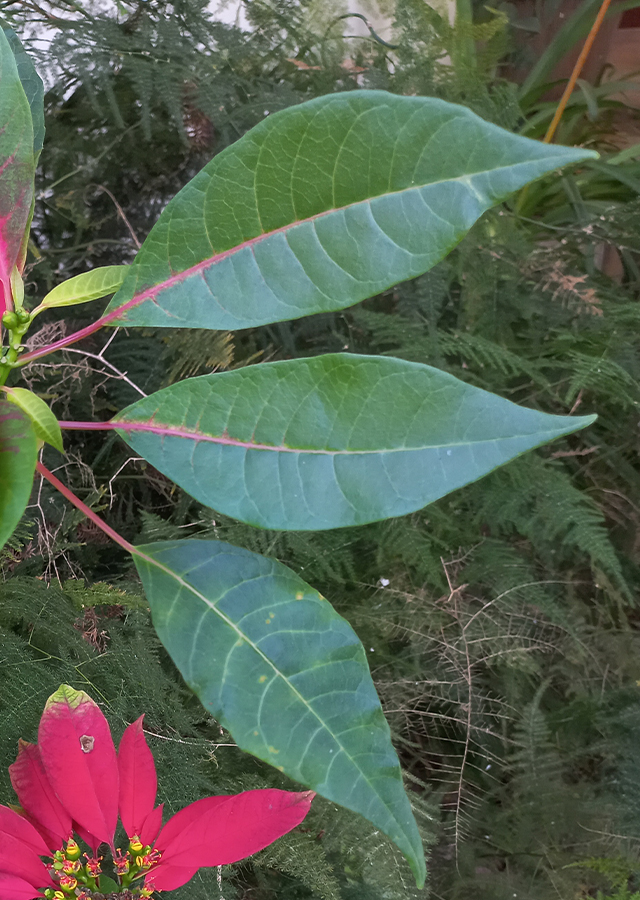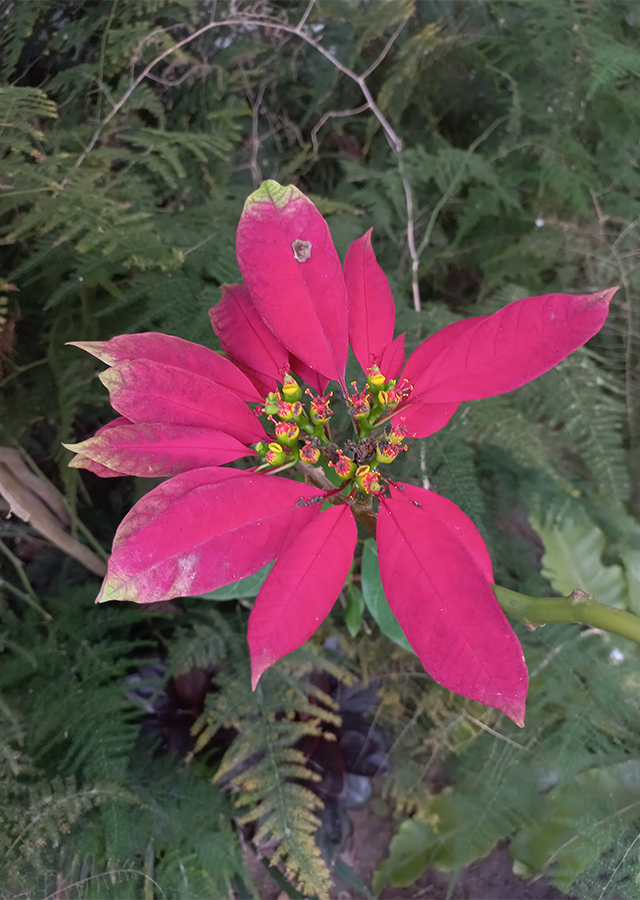Traditional Herbs from Euphorbia pulcherrima
skin_infection
- Prepare fresh\u00a0poinsettia leaves, wash them thoroughly.
- Crush them into a paste.
- Apply the leaf paste on the infected skin.
What is Euphorbia pulcherrima Looks like??



Parts of Euphorbia pulcherrima that could be used
- Leaves
- Flowers
- Sap
Euphorbia pulcherrima Distribution
The poinsettia was first cultivated in Aztec central Mexico and was once called the Cuetlaxochitl plant. Because of its brilliant color, poinsettia is a symbol of purity for the Indians. Poinsettias were first introduced to the United States in 1825 by Joel Roberts Poinsett, a botanist and at the time, the first U.S. ambassador to Mexico. In Indonesia, this plant has long been well known as a wild plant, Indonesian people often use it as an ornamental plant. Poinsettias have bracts that are bright red and are usually used as Christmas decorations. This plant has long been used by Mexicans as a skin medicine and to treat venomous animal bites. Studies have shown that this plant has cytotoxic activity, antibacterial, anticonvulsant, antinociceptive, and antioxidant properties.Agroecology of Euphorbia pulcherrima
Optimal air temperature ranges between 16-27 �C. Temperatures <16�C are very slow, at temperatures of 27�C they can disrupt optimal vegetative growth of plants. Height can grow in low and highlands. Light intensity, the area must be open and exposed to direct sunlight.
Morphology of Euphorbia pulcherrima
- Stems upright, sparsely branched, emitting sap.
- Single leaves with an elliptical to egg-shaped shape and stems that are often found with 2-4 indentations. The tips of the poinsettia leaves are pointed and have a pinnate leaf vein arrangement.
- Compound flowers that forms a cup with a special arrangement called a cyathium, on each cyathium there is a bract in the form of a true leaf which is red, white, yellow or other colors according to the variety.
Cultivation of Euphorbia pulcherrima
- Poinsettia plant propagation can be done using seeds (generative) or stem cuttings (vegetative).
- To get the best new plants, cut healthy new stems from strong plants. Take three to six inch (7.5 cm) cuttings up to 15 cm) from the parent plant.
Euphorbia pulcherrima, more details :
Chemical Content of Euphorbia pulcherrimaPhenolics, quinones, benzene and tannins, triterpenes, resins, yellow and red coloring agents, essential oils, tartaric acid, gallic acid, alkaloids, saponins, amylodextrin and formic acid, steroids, terpenoids, glycosides, reducing sugars, amino acids, flavonoids, eight compounds and identified as 5,7- dimethoxycoumarin; -sitosterol; 1,2-benzenedicaboxylic acid bis(2-ethylhexyl) ester; octadecylic acid; syringic acid; ferulic acid; daucosterol and routine.
Benefits of Euphorbia pulcherrima
Poultice for erysipelas and various skin problems, used as a galactagogue, emetic and cathartic, to increase breast milk flow, source of medicine for fever, emmenagogue, to treat tuberculosis, skin infections, and bone fractures.
Simplisia of Euphorbia pulcherrima
Another Facts for Euphorbia pulcherrima :
Synonym of Euphorbia pulcherrimaEuphorbia coccinea Raf., Euphorbia diversifolia Willd. ex Boiss., Euphorbia erithrophylla Bertol.
Habitus of Euphorbia pulcherrima
Bush. Annual shrub, 2-4 m high
Habitat of Euphorbia pulcherrima
- Mainland
No comments:
Post a Comment